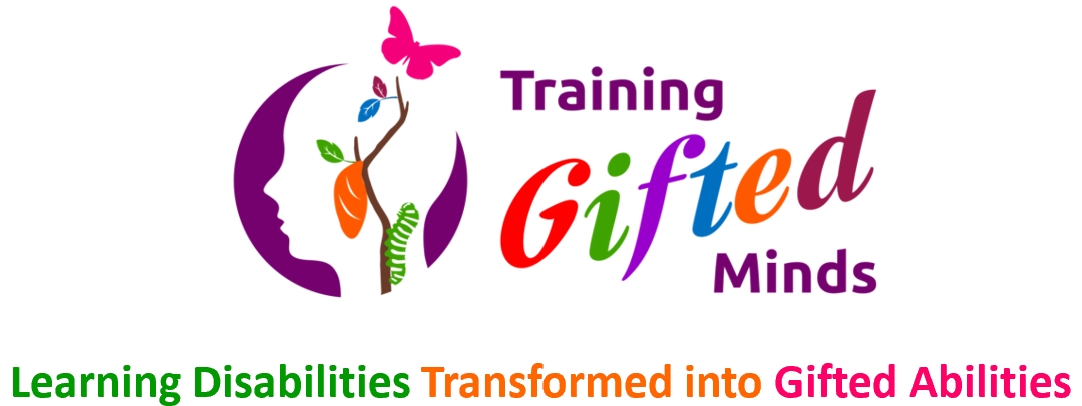Brief Overview of Verbal and Non-verbal Thinkers
There are two ways that people think:

“Verbal conceptualization means thinking with the sounds of words. It is linear in time. It follows the structure of language. When people use it, they compose mental sentences one word at a time. Verbal thinking occurs at about the same speed as speech. Normal speech has a speed of about 150 words per minute, 2.5 words per second.

Nonverbal conceptualization means thinking with mental pictures of concepts or ideas. Nonverbal thought is evolutionary. The picture “grows” as the thought process adds more concepts. Nonverbal thought is much faster. It happens so fast most people are not aware of it.
People think in both verbal and nonverbal modes, but we specialize in one or the other.” (Davis pg.9) It is generally understood that left “brain” dominant people think in words and right “brain” dominant people think in pictures.
The right brain hemisphere:
- specializes in understanding the relative position of objects in space and
- specializes in mentally turning around 3-D figures
This is known as disorientation. This perceptual gift enables them to see their word in 3-D, viewing objects from many angles, be creative or imaginative, and resolve confusion.
Disorientation
- Brain does not get what the eyes see but what it think it sees
- Brain does not get what the ears hear but what it thinks it hears
- Time slows down or speeds up
- Balance and Movement is off
At some point, everyone has experienced disorientation.
Examples:
- you are sitting in your car with your head down, and you feel like your car is moving. You put your foot out to step on the break only to find out you are sitting still.
- when you dream, you are disorienting.
The difference is the right brain person can do it at will. Anytime they want to disorient they can. As mentioned earlier, this perceptual gift enables them to view an object from many angles, be creative or imaginative, and resolve confusion. However, disorientation in math (dyscalculia), writing (dysgraphia), or focusing (ADHD) causes learning issues. In spelling or reading, it causes 2-dimenional symbols or letters to turn, twist, or appear 3-D, thus creating confusion and mistakes—the primary symptoms of dyslexia.
Disorientation in Reading

When a dyslexic uses their disorientation to turn an object, there is no problem. The chair still looks like a chair no matter how it is turned. However, this gift in reading only causes confusion because the letter “b” turned does not look like a letter “b”.

Not only can the child see it from different angles, but the child has the ability to rotate the images as well.
The child started doing this from a very earlier age. When the child looked at an object and could not figure out what it was, he/she would turn the image until the object was recognized.

When the dyslexic child encounters print for the first time, the natural reaction is to turn and flip the letters to make sense out of what the child is seeing. This worked for them when viewing an object. However, when disorientation takes place with words, it just creates more confusion. The dyslexic has the ability to see the word “cat” in 45 different images, but only one of those words is correct.
In the Davis approach, our first goal is to teach a child how to turn off their disorientation when reading or writing print. When the child “turns off” their disorientation, the world is viewed in a 2-D image. This is needed for reading or writing print. Next step, is to correct the other reasons why reading or writing is difficult.
Symbol Mastery
There are two types of words: those that create mental pictures and those that do not. For a dyslexic, they can think with words that have mental pictures: cat, bed, horse.
Seeing its picture is seeing its meaning.

A, the, and—do not have pictures or a meaning for a nonverbal thinker. Knowing what it looks like is not what it means.

When a person reads using verbal conceptualization, seeing words like “a”, “and”, and “the” will not create problems, because he knows how they sound.
However, reading the same sentence with nonverbal conceptualization the reader ends up with a series of unrelated pictures with blank spots in between.

Each time the picture-making process is stopped, the person will experience a feeling of confusion because the picture being composed becomes more incoherent. The reader can push past the blanks but the further he goes, the more confused he gets. Eventually he will reach his threshold of confusion.
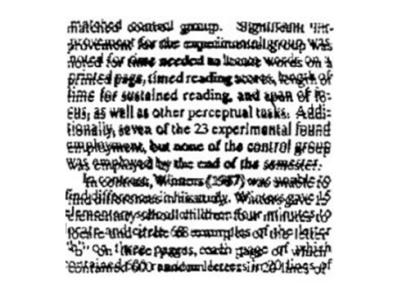
At this point, he disorients. Meaning the perception of the symbols gets altered and becomes distorted so that reading or writing is difficult or impossible.
When that happens, the dyslexic reader may change words, leave words out, stutter, repeat the word or phrase, etc. This confusion and the resulting mistakes are the primary symptoms of dyslexia.
(As I mentioned before, it is this same disorientation—shifting of perception—that helps dyslexics recognize real-life objects and events in their environment before they learned to read.)” (Davis pg. 12-13)
Solution? Client must do Symbol Mastery which is creating pictures for the words the dyslexic reader cannot see. The dyslexic needs to know what it looks like (word), what it sounds like (pronunciation), and what it means (definition in clay) in order to master the word. Making pictures of the non-picture words eliminate the negative issues of dyslexia.

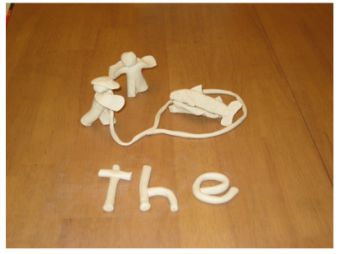
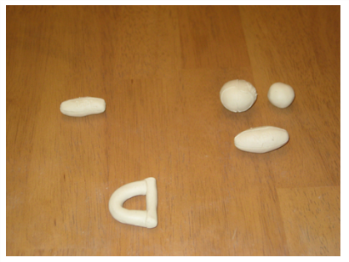
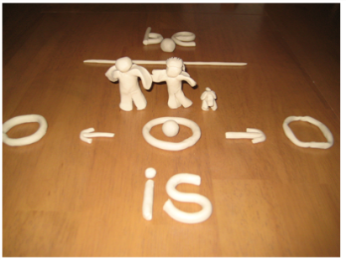
Symbol Mastery can also be used to help the dyslexic to understand concepts in other areas of school.
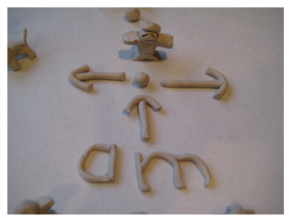
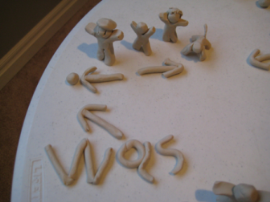

Examples of claying grammar
Disorientation in Writing
This is what happens when disorientation shows up in writing. This is the same child’s writings—at the beginning of the program and at the end of the one-week program.
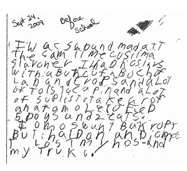
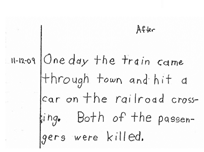
Disorientation can also take place in math and in focusing. Training Gifted Minds provides programs to address these issues as well.
Disorientation in Math (dyscalculia) Disorientation in Focusing (ADHD)

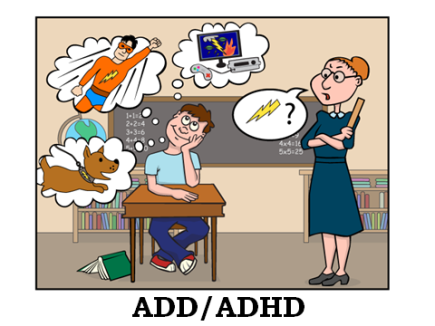
Cinda Osterman, M.Ed.
Education Consultant/Davis® Correction Facilitator
(Dyslexic, Attention Mastery (ADHD), Math Mastery)/
Davis® Autism Approach/ Davis® Concepts for Life/
Davis® Stepping Stones I & II
Professional services described as Davis®, including Davis Dyslexia Correction®, Davis Symbol Mastery®, Davis Orientation Counseling®, Davis® Attention Mastery, Davis® Math Mastery, and Davis® Reading Program for Young Learners may only be provided by persons who are trained and licensed as Davis Facilitators or Specialists by Davis Dyslexia Association International.
Davis®, Davis Autism Approach®, Davis® Stepping Stones, and Davis Concepts for Life℠ are trademarks of Ronald D. Davis. Commercial use of these trademarks to identify educational, instructional, or therapeutic services requires licensing by the trademark owner.
Professional services described as Davis Autism Approach® or Davis Concepts for Life℠ may only be provided by persons who are trained and licensed by the Ron Davis Autism Foundation.


